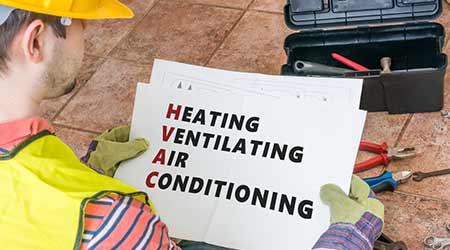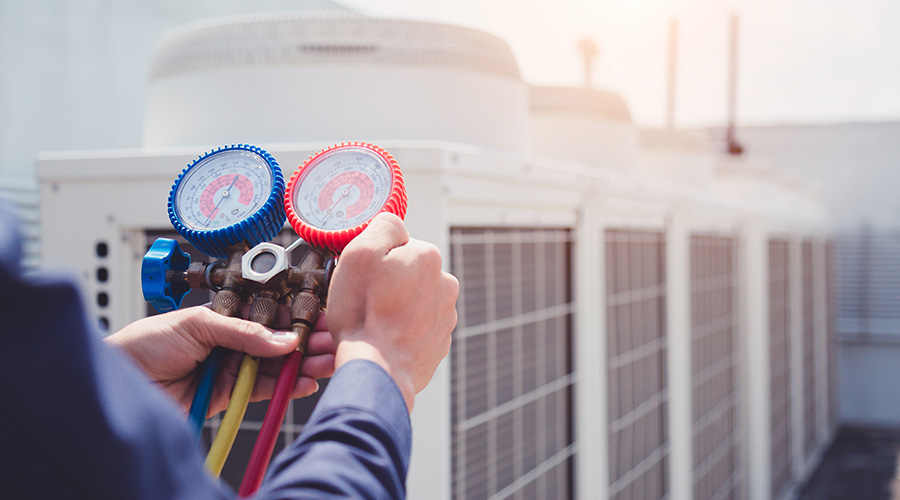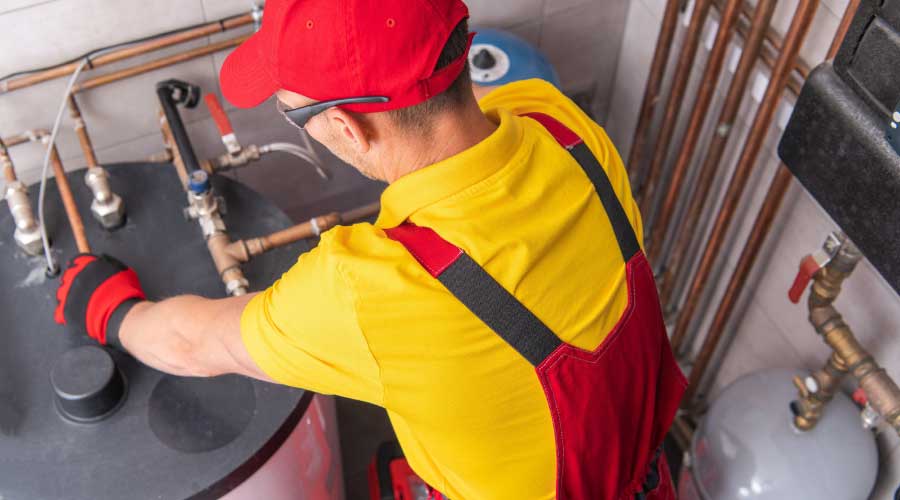How To Improve the Energy Efficiency of a VRF System
Energy recovery ventilators and dedicated outdoor air systems are two options to improve the energy efficiency of VRF systems.
The efficiency of a VRF system can be improved by adding a dedicated outdoor air system or energy recovery ventilator.
A dedicated outdoor air system conditions and delivers outdoor air to occupied spaces. The dedicated outdoor air system helps buildings meet the outdoor air requirements of ASHRAE 62.1, and is often employed (in conjunction with VRF systems) in more humid climates to pre-condition the outdoor air. The need for a dedicated outdoor air system will depend on the local climate, code, and facility type.
Schools, for example, generally have higher outdoor air flow requirements and therefore are good candidates for a dedicated outdoor air system since the school’s VRF system indoor units may not be able to condition all the outside air.
A dedicated outdoor air system unit was used to address the higher latent loads experienced when the Getz Theater has a full house. The dedicated outdoor air system overcools air to dry it out. The air is then reheated before it is supplied to the space.
An energy recovery ventilator is an air-to-air heat exchanger that acts as an additional heat recovery agent when coupled with a dedicated outdoor air system. The energy recovery ventilator works by pre-tempering the incoming air with heat that’s being exhausted from the building, resulting in additional and often significant operational savings. An energy recovery ventilator is ideal for more severe climates with extreme design conditions.
There are two types of energy recovery ventilators — enthalpy wheel or fixed plate. While both types of energy recovery ventilators are close in their efficiencies, the decision on which to use is sometimes dictated by local codes.
Dedicated outdoor air systems or energy recovery ventilator systems are ideal for buildings that were not originally designed with ventilation or air conditioning. These systems could be an option in some cases where there are structural or space limitations on the roof and a central air handling unit is not feasible.
Ultimately, the decision between (two-pipe) heat pump or heat recovery, as well as the use of a dedicated outdoor air system or energy recovery ventilator, is dictated by local climate, space programming, and the end user’s requirements. When designed correctly, VRF systems can allow for increased flexibility, maximum occupancy control, and optimized energy savings. Understanding the full picture of benefits is the key to successful implementation in any facility.
Related Topics:















